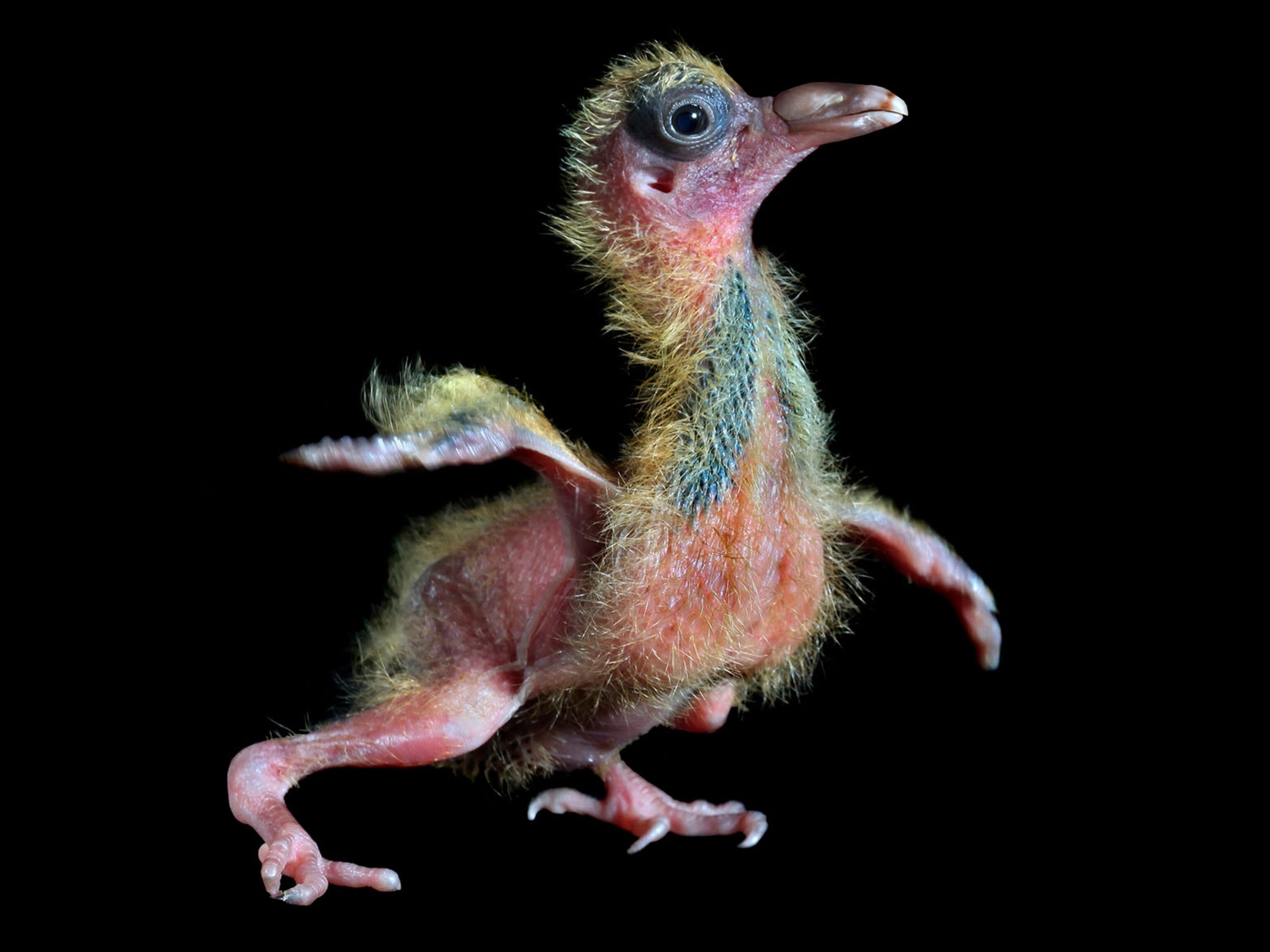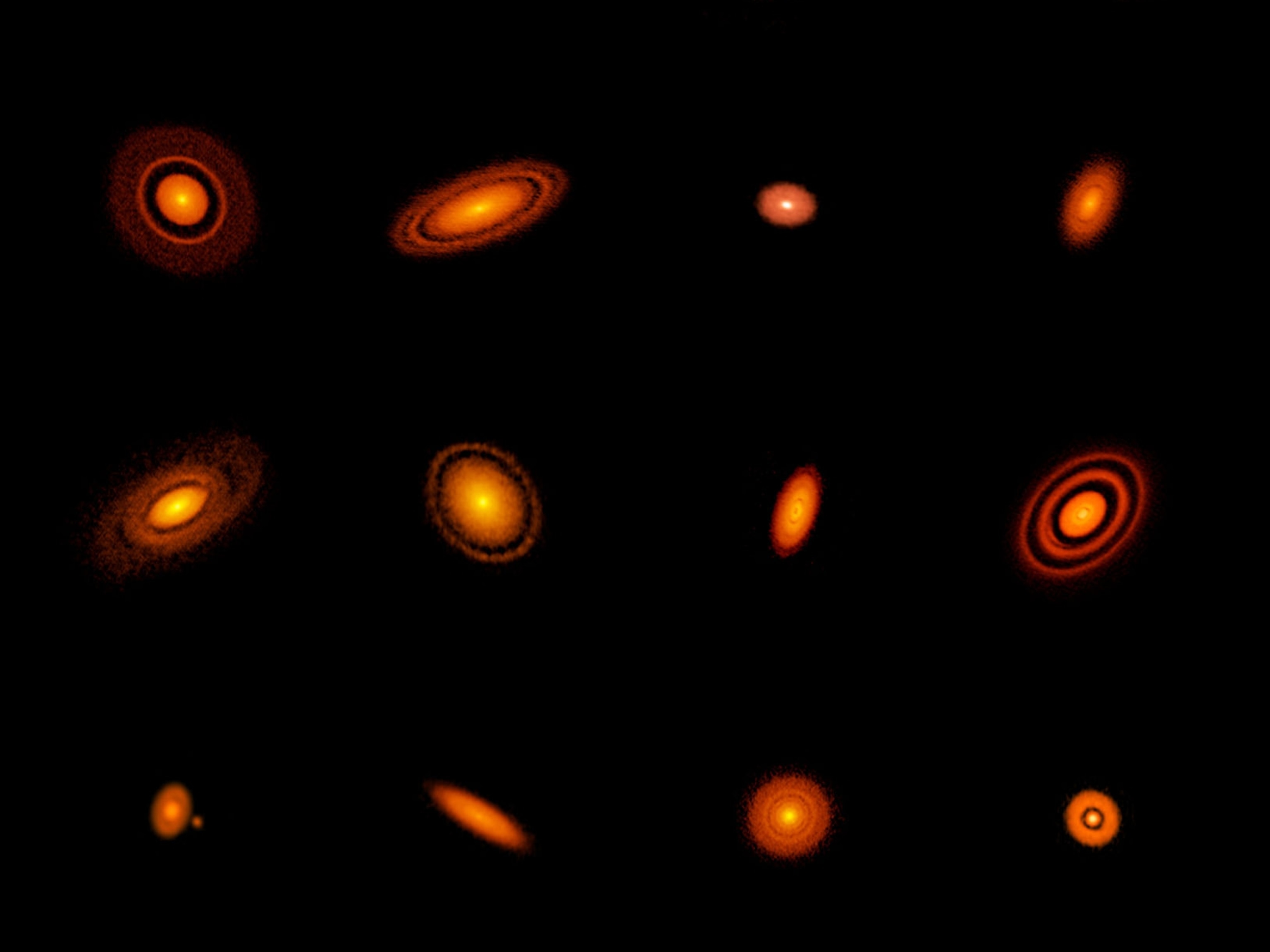
Our three favorite scientific breakthroughs this month
What do rare orchids, crocodiles, and meteorites have in common? Science.
Plant’s pollinator secrets revealed
For exotic beauty, few flowers rival the ghost orchid (Dendrophylax lindenii). These rare orchids have long nectar tubes into which moths stick their tonguelike proboscises to reach a sugary reward. As they feed, moths rub against a pollen source and pick up grains they’ll transfer to other orchids they visit.
It’s long been thought that only one insect, the giant sphinx moth, had a long enough proboscis to pollinate these orchids—but new images and research refute that. Photographers Carlton Ward, Jr., and Mac Stone, working with biologists Peter Houlihan (a National Geographic Society grantee) and Mark Danaher (of the U.S. Fish and Wildlife Service), spent years preparing and fine-tuning remote cameras. The payoff: photos of five moth species visiting ghost orchids, including the streaked sphinx pictured above, in Florida Panther National Wildlife Refuge. Two of these species had ghost orchid pollen on their bodies. Meanwhile, new measurements suggest that even more moth species may be able to reach the orchid’s nectar. “It’s incredible,” Ward says, to make a discovery about this “symbol of hidden wildness.” —Douglas Main
Read the full story: Discovery reveals secrets about how ghost orchids reproduce

Preserving meteorites for study
Rocks from space regularly rain down on our planet, but only a few survive the fall. At Arizona State University’s Center for Meteorite Studies, some 40,000 meteorite remnants—such as the rare metal-and-crystal pallasite above—are stored in a humidity-controlled facility. The goal is to keep them free of contamination so future generations can study them for clues to how our solar system formed, and how we might one day survive in space. —Maya Wei-Haas

Bellyful of stones
It’s not unusual for crocodiles, alligators, and other crocodilians to have a stomach full of stones. Scientists have long assumed the stones help the semiaquatic reptiles digest prey; a new study suggests they also enable the crocs to spend more time submerged. —Annie Roth
Related Topics
Go Further
Animals
- This ‘saber-toothed’ salmon wasn’t quite what we thoughtThis ‘saber-toothed’ salmon wasn’t quite what we thought
- Why this rhino-zebra friendship makes perfect senseWhy this rhino-zebra friendship makes perfect sense
- When did bioluminescence evolve? It’s older than we thought.When did bioluminescence evolve? It’s older than we thought.
- Soy, skim … spider. Are any of these technically milk?Soy, skim … spider. Are any of these technically milk?
- This pristine piece of the Amazon shows nature’s resilienceThis pristine piece of the Amazon shows nature’s resilience
Environment
- This pristine piece of the Amazon shows nature’s resilienceThis pristine piece of the Amazon shows nature’s resilience
- Listen to 30 years of climate change transformed into haunting musicListen to 30 years of climate change transformed into haunting music
- This ancient society tried to stop El Niño—with child sacrificeThis ancient society tried to stop El Niño—with child sacrifice
- U.S. plans to clean its drinking water. What does that mean?U.S. plans to clean its drinking water. What does that mean?
History & Culture
- Meet the original members of the tortured poets departmentMeet the original members of the tortured poets department
- Séances at the White House? Why these first ladies turned to the occultSéances at the White House? Why these first ladies turned to the occult
- Gambling is everywhere now. When is that a problem?Gambling is everywhere now. When is that a problem?
- Beauty is pain—at least it was in 17th-century SpainBeauty is pain—at least it was in 17th-century Spain
- The real spies who inspired ‘The Ministry of Ungentlemanly Warfare’The real spies who inspired ‘The Ministry of Ungentlemanly Warfare’
Science
- Here's how astronomers found one of the rarest phenomenons in spaceHere's how astronomers found one of the rarest phenomenons in space
- Not an extrovert or introvert? There’s a word for that.Not an extrovert or introvert? There’s a word for that.
- NASA has a plan to clean up space junk—but is going green enough?NASA has a plan to clean up space junk—but is going green enough?
- Soy, skim … spider. Are any of these technically milk?Soy, skim … spider. Are any of these technically milk?
Travel
- What it's like to hike the Camino del Mayab in MexicoWhat it's like to hike the Camino del Mayab in Mexico
- Is this small English town Yorkshire's culinary capital?Is this small English town Yorkshire's culinary capital?
- This chef is taking Indian cuisine in a bold new directionThis chef is taking Indian cuisine in a bold new direction



